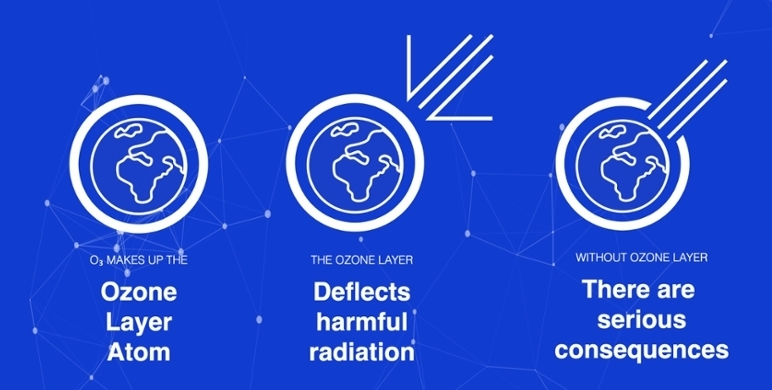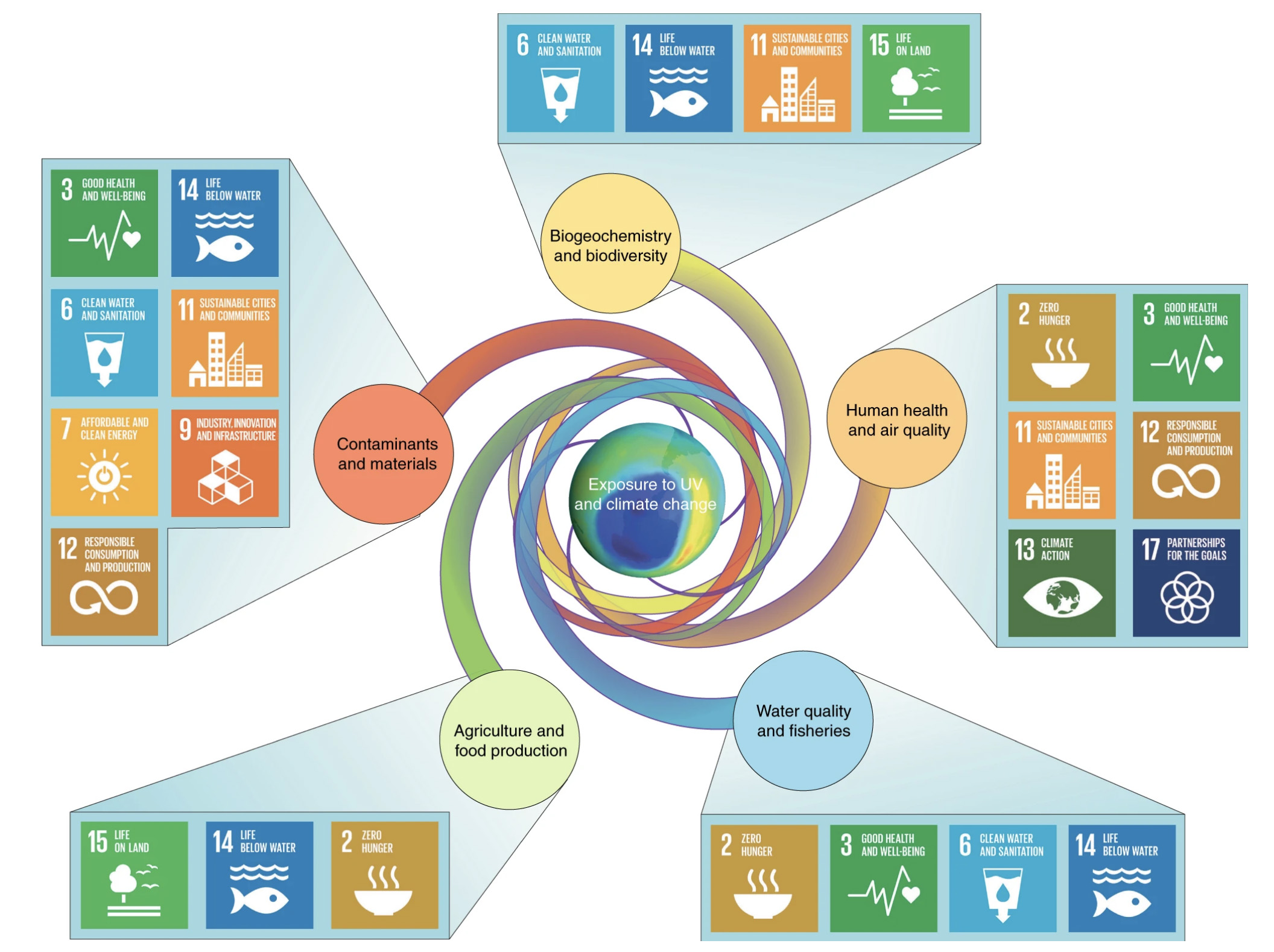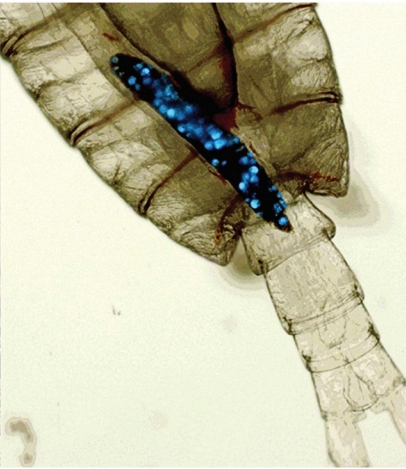

Beyond sunburn: implications of ozone, UV radiation and climate for a sustainable future
By Susan Meikle, university news and communications, with Craig Williamson, Ohio Eminent Scholar of Ecosystem Ecology

The Montreal Protocol celebrates 32 years of international cooperation to protect the ozone layer and the climate (image from UNEP.org).
Ozone depletion in the stratosphere continues to affect not only ultraviolet (UV) radiation levels at the Earth’s surface but also climate across the Southern Hemisphere, an international study reports.
The paper, published this week in Nature Sustainability, reports on the complex interactions between ozone depletion, UV radiation and climate change, and how they impact human health, food and water security, and the environment.
Written by members of the United Nations Environmental Effects Assessment Panel (EEAP) — including Miami University ecologist Craig Williamson, a lead author — the paper synthesizes the leading peer-reviewed literature in this area from the past four years.
The EEAP is one of three scientific panels that inform the Parties (countries) of the United Nations about the status of global ozone depletion and UV radiation related to the Montreal Protocol (MP).
The Montreal Protocol — the first multilateral environmental agreement to be ratified by all Parties of the United Nations (197 Parties in 2008) — has been an enormous success, preventing increases in solar UV that would have had a catastrophic effect on human health, agriculture and the environment, according to the EEAP.
- The MP has helped phase out production of ozone-depleting substances such as chlorofluorocarbons (CFCs), thus protecting the ozone layer, Earth’s main filter for solar UV radiation.
- By reducing ozone-depleting substances — many of which are greenhouse gases — the MP has also done more to mitigate climate change than any other human action to date.
- Modelling studies indicate that in the absence of the MP, global mean temperatures would have risen more than 2 degrees Celsius (3.6 degrees F) by 2070 owing to the warming effects from ozone-depleting substances alone.
Environmental effects of ozone depletion and climate change in the Southern Hemisphere
Ozone depletion has long been known to increase harmful UV radiation at the Earth’s surface, but its effect on climate has only recently become evident, according to the EEAP.
Stratospheric ozone depletion has shifted the major climate zones in the Southern Hemisphere. Some populations of penguins, elephant seals and seabirds have benefitted from the increasing oceanic productivity in some regions, while corals and kelp have decreased in other regions of the Southern Ocean.
Another lead author, Sharon Robinson of the University of Wollongong in Australia, said, "We are seeing changes across the Southern Hemisphere, from the pole to the tropics. Some areas are getting more rain and some have become drier, which has a huge effect on plants and animals, including on agriculture."
These changes alter where the algae in the ocean are, "which is altering where the fish are and where the walruses and seals are, so we’re seeing many changes in the food web.” said co-author Kevin Rose (Miami Ph.D. '11), the Frederic R. Kolleck ’52 Career Development Chair in Freshwater Ecology at Rensselaer Polytechnic Institute and one of Williamson's former doctoral students.
Climate change is modifying UV radiation exposure

Microplastic in the fecal pellets of a copepod. These tiny crustaceans live in oceans, are the most abundant multicellular organisms on the planet, and are a critical foundation of marine food webs (photo by Matthew Cole and J.R.Clark).
Climate change is modifying UV exposure and affecting how people and ecosystems respond to UV, Williamson said. The panel also reports:
- Recent models have determined that current levels of UV radiation reduce oceanic primary production by as much as 20%. This has the potential to reduce the effectiveness of the oceans as a sink for atmospheric carbon dioxide.
- Increases in heavy precipitation related to climate change has reduced the UV transparency of coastal marine and inland waters, reducing the ability of solar UV radiation to disinfect parasites and pathogens of humans and wildlife. This solar disinfection is the most important environmental factor reducing infectious waterborne pathogens, thus increasing the threat of infectious diseases, Williamson said.
- Solar UV radiation is the primary environmental factor breaking down plastics and contributing to the increase in microplastics that are now found in up to 20% of fish being sold in markets in many parts of the world.
- Increases in the use of synthetic sunscreens to reduce sunburn has contaminated many areas where humans spend time on beaches, threatening corals and other aquatic organisms to the extent that many of these sunscreens have been banned in Hawaii and Key West, Florida.
- Without the Montreal Protocol, UV radiation levels in the near future would be more than twice what the World Health Organization considers extreme in many parts of the world. It would be close to four times this extreme level in the tropics.
Good news
- The new paper reports that ozone levels in the stratosphere are recovering and projected to reach pre-1980s levels by the middle of the 21st century, provided the Montreal Protocol is adhered to.
Monitoring has revealed recent unexpected increases in CFC emissions, according to the EEAP. If these continue, they could reverse some of the gains that have been made.
Williamson, Ohio Eminent Scholar of Ecosystem Ecology and professor of biology, has served on the United Nations Environment Programme Environmental Effects Assessment Panel since 2010. He is also a member of the the Freshwater Indicators Technical Team for the National Climate Assessment (NCA FITT) and leads the Global Change Limnology Laboratory.
